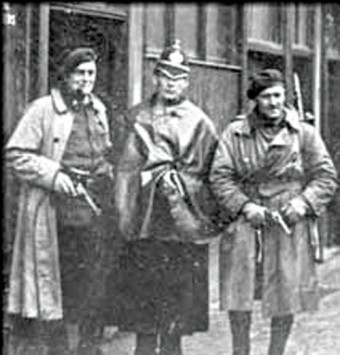Search Results for 'Black and Tans'
17 results found.
Black and Tans spotted in Connemara in run up to GIAF show
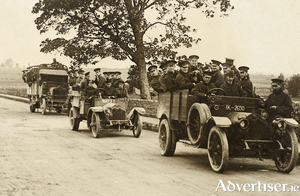
Members of the public travelling west of An Spideál had quite a shock recently when a 1920s era Saracen truck, with a full complement of Black and Tans, was spotted speeding along the R336 at various times of the day.
100 years since Oranmore’s Joe Howley was shot

In the centre of Oranmore, stands a statue to a local man who was shot in Dublin one hundred years ago this week. Joe Howley, Officer Commanding Number One Brigade IRA Galway was killed leaving what is now Heuston Station, Dublin on December 4 1920, and was pronounced dead at 12.30 a.m. December 5 in George V Hospital Dublin.
The Black and Tans' raid on O’Flaherty’s Pub
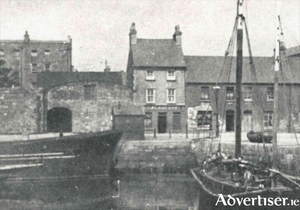
The tall building in the centre of our picture of New Docks Road taken in 1903 was known as “Gas Tank” Flaherty’s pub. We presume he got his nickname because of the gasworks across the street. It was here that the distinguished English painter Augustus John lived for several weeks in 1914. He did a lot of painting and drawing around the city and especially the docks area, but when the World War I started, he began to worry that the locals would regard him as an English spy, so he went back to England.
Breandán Ó hEithir and the 'gentle' Black and Tans
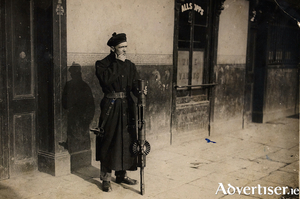
THE ANNUAL Féile na bhFlaitheartach, which usually takes place on Inis Mór each August, has been re-imagined in light of the Covid-19 pandemic, and will be an online event this year.
Thomas ‘Baby’ Duggan
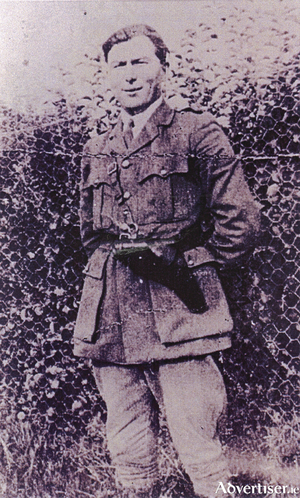
Thomas Duggan was popularly known as “Baby” because of the contrast to his considerable proportions. He was born in 1899. Although only a boy, he was one of the first to take up arms with Liam Mellows in the lead up to the Rising. When the Rising was quelled, he was arrested with many others and interned at Frongoch. He was kept there until Christmas, when he was released under a general amnesty.
Local papers and their role in our history
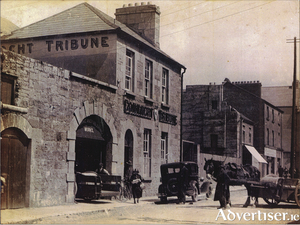
In 1909 Galway was at a low ebb, the population was just over 3,000, the local economy was in poor shape, the canal and the docks were not being well used commercially, the student population of UCG was 131, there was very little manufacturing, and local politics was still bedevilled by the Parnell split. There were two local newspapers, The Connacht Champion which actively supported William Smith O’Brien MP and often virulently attacked the Irish Parliamentary Party, and The Galway Express which originally supported the conservative unionist viewpoint, but which gradually became more nationalist until its premises were wrecked in 1920 by the Black and Tans.
Peg Broderick-Nicholson and the War Of Independence
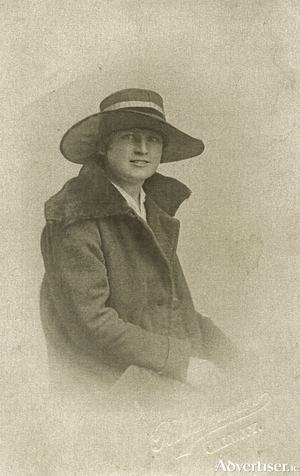
Peg was born at 17 Prospect Hill of parents with a strong nationalist outlook. She went to school in ‘The Pres’, where after the 1916 Rising there was a pitched battle between the wearers of the red, white, and blue badges (common during World War I) and those wearing green, white, and gold badges. The green side won, but then all the badges were confiscated by Mother Brendan.
The Auxiliaries in Galway

As the guerrilla war attacks by the Irish Volunteers on the RIC began to escalate in 1919, the British government recruited World War I veterans as a complementary force to the RIC. It advertised for men willing “to face a tough and dangerous task”. These were the Black and Tans. A further campaign was launched to recruit former army officers who were specifically formed into counter insurgency units known as the Auxiliaries or ‘The Auxies’. They wore distinctive ‘Tam O’Shanter’ caps. One of these units, D Company, was stationed in Lenaboy Castle and in ‘The Retreat’ in Salthill.
